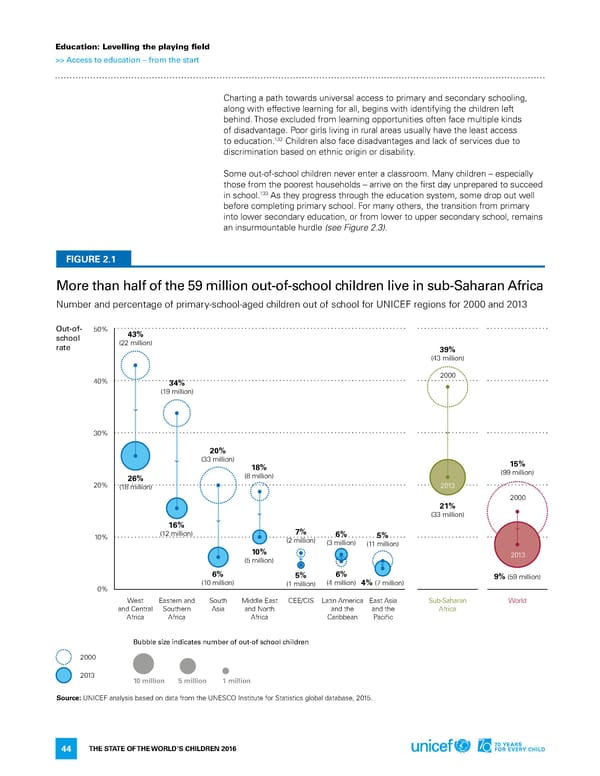Education: Levelling the playing field >> Access to education – from the start Charting a path towards universal access to primary and secondary schooling, along with effective learning for all, begins with identifying the children left behind. Those excluded from learning opportunities often face multiple kinds of disadvantage. Poor girls living in rural areas usually have the least access 132 to education. Children also face disadvantages and lack of services due to discrimination based on ethnic origin or disability. Some out-of-school children never enter a classroom. Many children – especially those from the poorest households – arrive on the first day unprepared to succeed 133 in school. as they progress through the education system, some drop out well before completing primary school. for many others, the transition from primary into lower secondary education, or from lower to upper secondary school, remains an insurmountable hurdle (see Figure 2.3). FIGURE 2.1 More than half of the 59 million out-of-school children live in sub-Saharan Africa number and percentage of primary-school-aged children out of school for UniCef regions for 2000 and 2013 out-of- 50% 43% school (22 million) rate 39% (43 million) 40% 2000 34% (19 million) 30% 20% (33 million) 15% 18% (99 million) 26% (8 million) 20% (18 million) 2013 2000 21% (33 million) 16% 7% 10% (12 million) 6% 5% (2 million) (3 million) (11 million) 10% 2013 (5 million) 6% 5% 6% 9% (59 million) (10 million) (1 million) (4 million) 4% (7 million) 0% West eastern and South Middle east Cee/CiS latin america east asia Sub-Saharan World and Central Southern asia and north and the and the africa africa africa africa Caribbean Pacific Bubble size indicates number of out-of school children 2000 2013 10 million 5 million 1 million Source: UniCef analysis based on data from the UneSCo institute for Statistics global database, 2015. The STaTe of The World’S Children 2016 44
 70 Years for Every Child Page 59 Page 61
70 Years for Every Child Page 59 Page 61